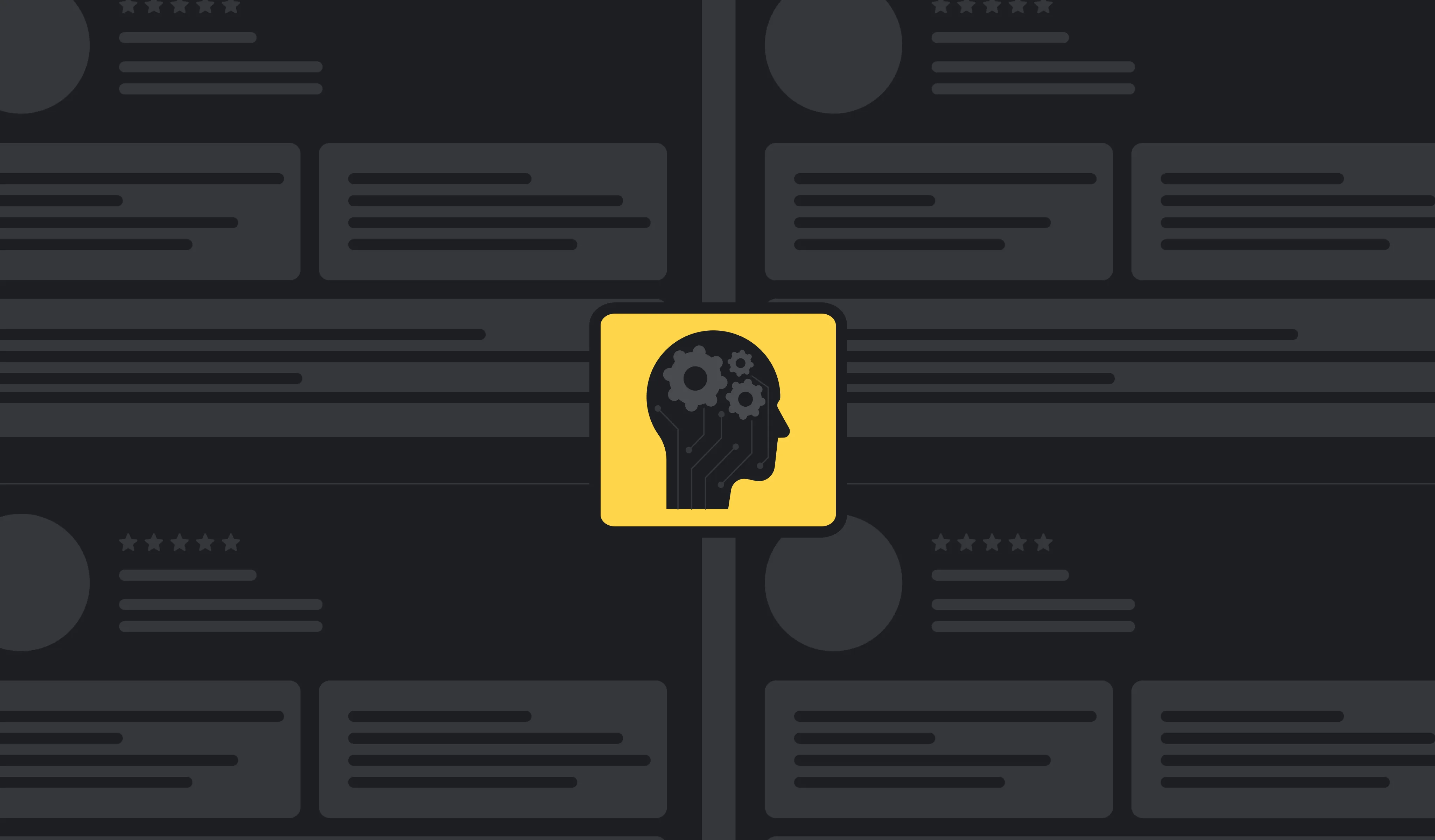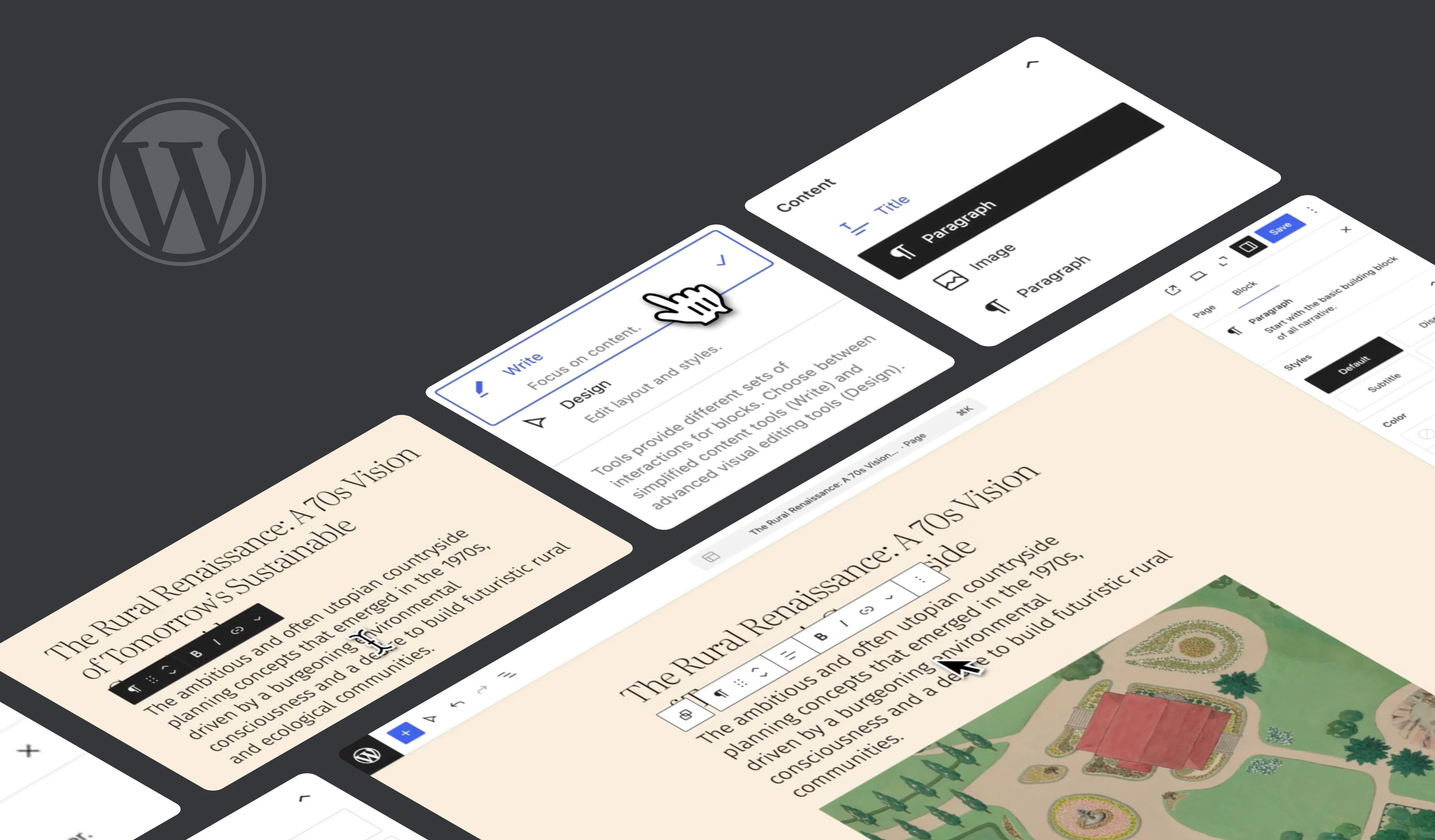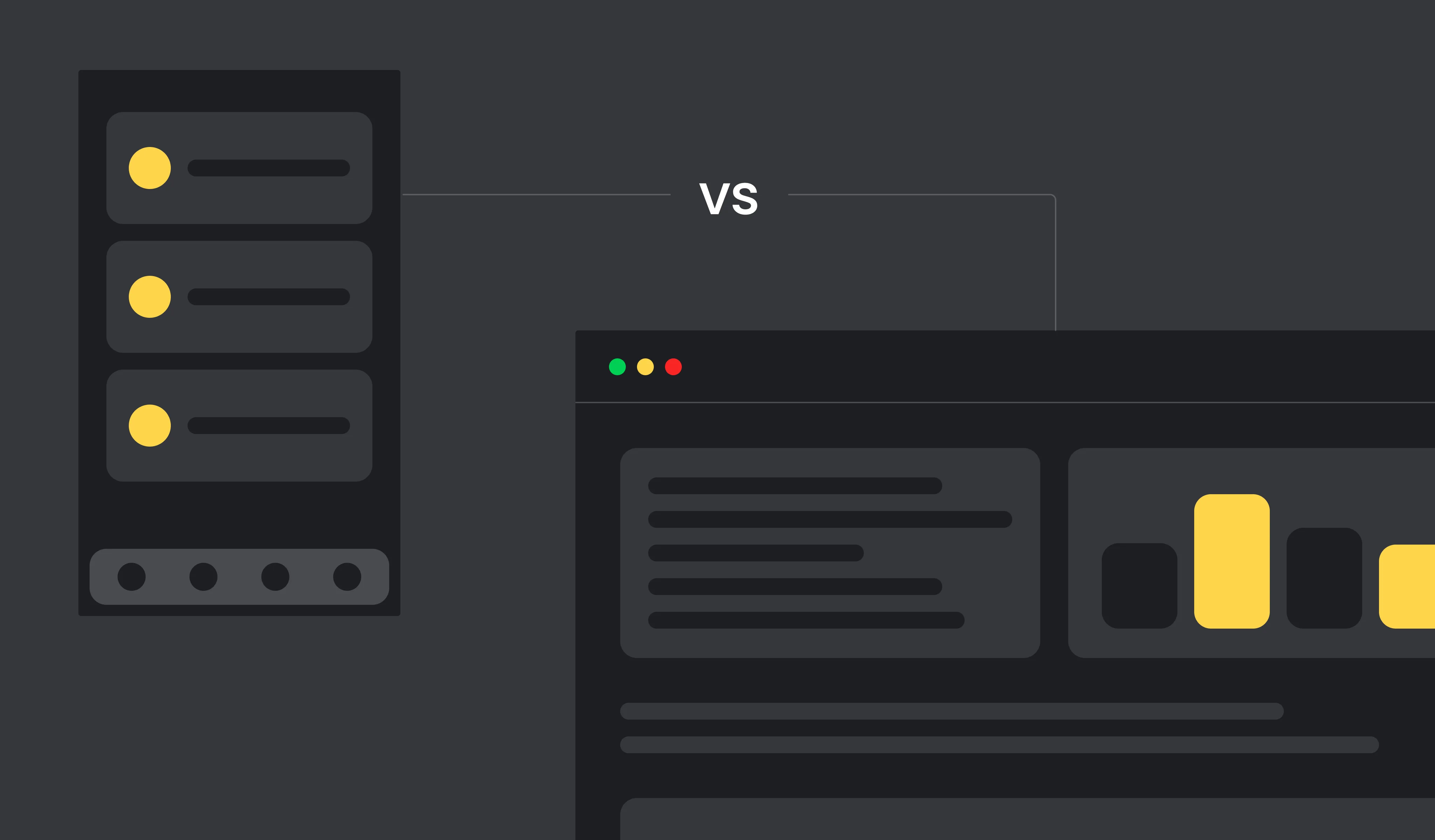Hiring AI talent today feels a lot like 1999 web hiring: everyone wants it, few can explain it, and job descriptions still sound like wish lists. The market is hotter than ever: global postings for AI-related roles are up 7.5% year over year, even as overall hiring slows, and AI-skilled professionals now earn roughly 56% more than their peers.
The problem isn’t scarcity – it’s precision. Most organizations still can’t articulate what they need AI talent to accomplish, so they chase unicorns: PhDs who can deploy models, design systems, write prompts, and ship products – all at once.
The good news? You don’t need unicorns. You need structure: a clear outcome, the right roles, and governance that makes progress repeatable. This guide breaks down what actually will work in 2026: how to define outcomes before hiring, evaluate practical skills, balance internal and partner teams, and build AI capability that delivers measurable results.
The AI talent market: Reality check
Everyone knows the market is hot, but heat isn’t the problem anymore. Heading into 2026, the real challenge isn’t finding AI talent; it’s finding the right configuration of skills that actually move a project from idea to production.
Organizations are discovering that “AI work” now spans five distinct disciplines: data engineering, model integration, product management, MLOps, and governance. The trouble is, most job descriptions still compress all five into one impossible role.
That’s why even as hiring budgets rise, many AI projects stall. McKinsey’s State of AI 2025 found that nearly half of organizations cite integration and cross-functional collaboration – not data science – as their biggest capability gap. Teams can fine-tune models but can’t connect them to their CMS, CRM, or analytics stack in a compliant, measurable way. The result is a quiet form of technical debt: models that work in isolation but never make it into production.

Define the outcome, then design the role
Most failed AI hires start with a sentence that sounds like this: “We’re looking for an AI engineer.” But that’s a starting point, not a strategy.
Before posting a job, you need to know what outcome the role is intended to deliver. AI doesn’t create value by existing; it creates value when it improves a decision, shortens a process, or personalizes an experience. So, define the business problem first, and let that shape your team.
Step 1. Write the business outcome (plain language, measurable)
- Reduce member churn by 30% within 12 months
- Automate 50% of manual support tickets by year-end
- Increase content engagement by 25% across site users
Tip: Outcomes should be business-measurable, user-visible, and time-bound. If you can’t measure it, you can’t hire for it.
Step 2. Translate outcome → AI use case
Use the outcome to select a family of solutions, not a tool brand:
- Churn ↓ → Recommendation engine + behavioral modeling
- Support cost ↓ → AI chatbot + escalation workflows
- Engagement ↑ → Vector search + content tagging + personalization
Tip: This keeps you from over-hiring research profiles when you actually need integration + evaluation.
Step 3. Map use case → roles/skills
Now design the job backward from the work required:
- Recommendation engine → Data Engineer, AI Engineer, CMS Integrator
- AI chatbot + escalation → Conversation Designer, Integration Developer, Governance Lead
- Vector search + personalization → AI Engineer, UX Designer, Metadata Specialist
Tip: Hire for the smallest set of complementary skills that can ship to production in your environment – then expand as the use case proves value.
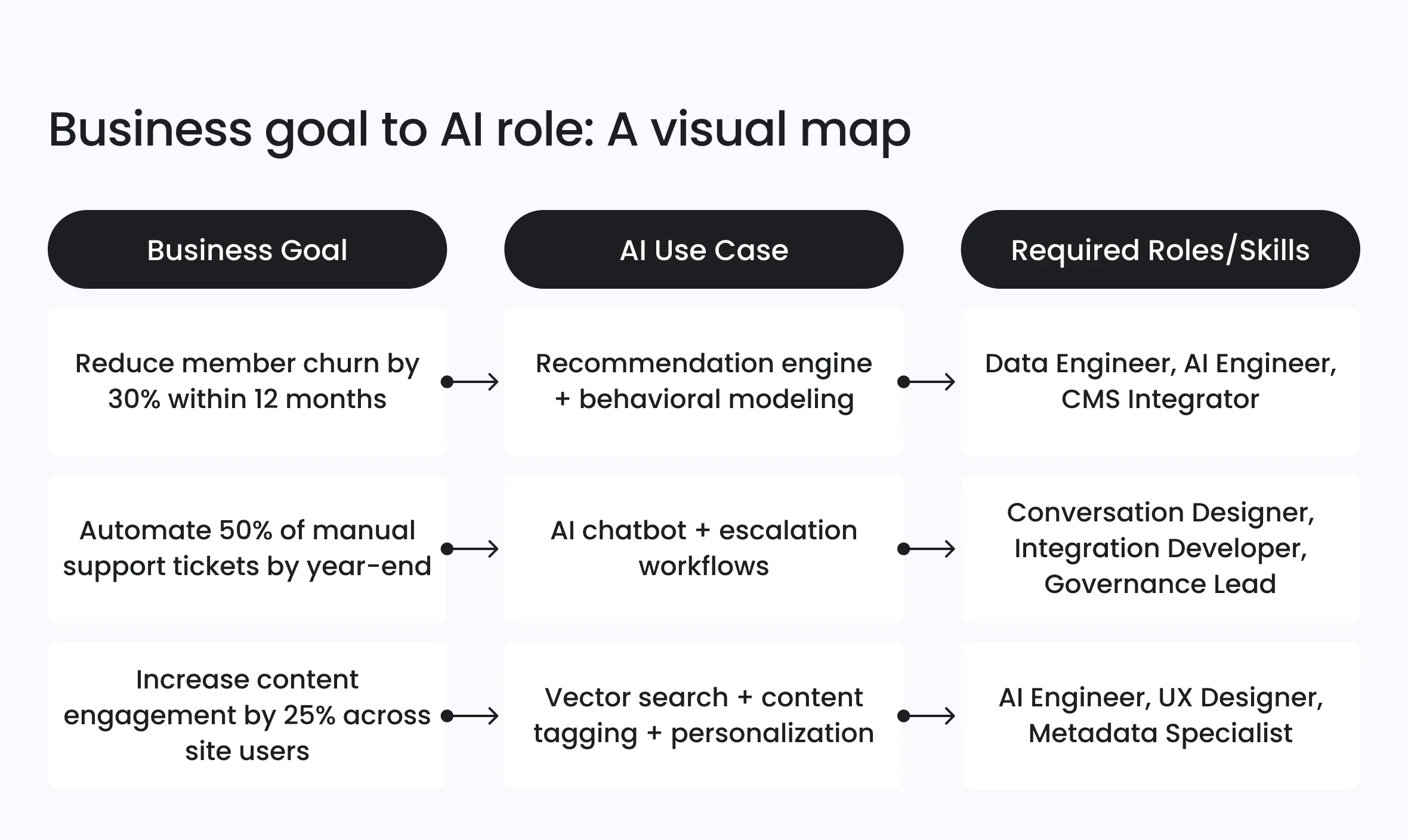
Source talent smartly
Once you know what you’re hiring for, the next question is where and how. In 2025, heading into 2026, most hiring mistakes come from treating AI roles like traditional software jobs – post a description, collect résumés, hope for magic.
That approach collapses when the best candidates are already working, freelancing across projects, or clustered around open-source communities instead of job boards.
Look where the work happens
Skip the generic platforms and search where AI builders actually build:
- GitHub / Hugging Face / Kaggle – Look for recent, consistent contributions or model cards, not just stars.
- ML and data-ops Slack or Discord groups – Engagement > credentials; community participants often outperform quiet applicants.
- Specialized networks – Platforms like Index.dev and Turing pre-screen for portfolio quality and timezone coverage.
Think in terms of access, not ownership
You may not need full-time hires on day one. Mix models:
- Core team + contract specialists for high-intensity sprints (e.g., data cleanup, MLOps setup).
- Nearshore partners to extend bandwidth in compatible time zones.
- Strategic tech partner when integration, compliance, and product design must move together.
Hybrid access beats overhiring. It lets you test scope, validate ROI, and scale intentionally.
Build your signal filter
AI resumes now read like prompt-engineered poetry. To separate genuine experience from AI-assisted fluff:
- Ask for code or artifacts – a model notebook, dashboard, or evaluation script.
- Run a short skills screen using your real data schema (no toy datasets).
- Prioritize problem explanations over jargon. Can the candidate describe trade-offs in plain language?
Benchmark without overpaying
Use live salary data, not last year’s hype. According to the RiseWorks AI Talent Salary Report 2025, the median U.S. comp for mid-market AI engineers sits around $160 K, with 25-40 % premiums for senior or specialized roles.
Expect to pay more for applied systems builders who understand data pipelines and integration, and less for research-only backgrounds. But geography and flexibility now matter more than title – the same report found a 20–90 % cost differential between on-shore and near-shore markets.
Keep sourcing continuous
AI capability changes quarterly. So should your hiring radar.
- Maintain a rolling bench of freelancers and partners who’ve delivered before.
- Rotate internal training programs, re-skill strong engineers into AI ops or data integration roles.
- Review portfolio freshness every six months; tech that’s six months old can already be legacy.
Team models that work
Once you know who you need and where to find them, the final question is how to structure them so they actually deliver. By now, most organizations realize that building a great AI team isn’t about headcount. It’s about composition, communication, and continuity. The smartest teams use structure as a multiplier: fewer people, better defined.
Model 1. The seed team
Ideal for pilots or early experimentation.
A small, cross-functional group proves value before major investment.
Typical setup: AI Lead, Data Engineer, UX Designer.
Strengths:
- Tight communication loops
- Ownership stays in-house
- Perfect for one focused proof of concept
Watch-outs: limited scope, slower iteration once the prototype succeeds.
→ Best used when you’re validating AI feasibility or building an internal success story.
Model 2. The hybrid model
This is where most serious organizations are heading in 2026.
Internal leaders set direction; a specialized partner provides delivery capacity, integration expertise, and governance frameworks.
Composition: Internal Lead + Partner Team (data engineering, AI integration, UX, DevOps, compliance).
Strengths:
- Combines institutional knowledge with external speed
- Enables compliance and security without internal hiring bloat
- Ideal for projects connecting AI with CMS, CRM, or data infrastructure
Watch-outs: needs strong coordination and shared documentation practices. Hybrid teams deliver faster because they balance control and velocity.
Model 3. The extended partner model
For organizations scaling multiple AI initiatives in parallel.
You keep strategic and governance control; your partner manages day-to-day delivery pods.
Composition: External Pod + Internal Strategy/Governance.
Strengths:
- Rapid scale-up without internal bottlenecks
- Predictable budgets and SLAs
- Great for complex, multi-department programs
Watch-outs: risk of dependency or knowledge drain if handoff is ignored.
→ Solve that with clear documentation, shared dashboards, and scheduled capability transfer.

How to evaluate AI talent
Finding candidates is easy. Evaluating them is where most teams fail. Too many interviews still focus on abstract questions (“Explain gradient descent”) instead of real scenarios (“How would you integrate a model into our CMS?”).
In 2026, the strongest hiring processes will combine proof of practice with clarity of thought, not algorithm trivia.
Step 1. Start with the portfolio
Ask for proof of applied work, not polished slides:
- Public repos or Hugging Face model cards
- Code samples showing data pipelines or prompt chains
- A brief note on what problem the work solved and how it performed
Look for recent, relevant, and iterative work; steady progress often signals more value than a single flashy demo.
Step 2. Replace trick questions with small tasks
Give candidates a short, structured assignment tied to your environment:
“Here’s a sanitized dataset. Build a basic RAG pipeline that can answer content queries. Document your setup and trade-offs.”
You’re not testing memory; you’re testing judgment, clarity, and reproducibility. Time-box it to two or three hours to respect candidates’ time. Serious professionals will deliver concise, documented solutions.
Step 3. Interview for systems thinking
Move from how they code to how they connect.
Strong candidates can explain:
- Where their model fits in your stack
- How they’d monitor drift or failure
- How they’d hand off outputs to product or design teams
Look for people who understand dependencies – data sources, APIs, CI/CD pipelines, and governance layers.
Step 4. Check for governance awareness
A good engineer builds a model; a great one builds a responsible model.
Ask simple but telling questions:
- “How would you prevent PII exposure in a fine-tuning dataset?”
- “What would you log for auditability?”
- “How would you test for bias in generated outputs?”
The answers don’t need to be legalistic, they need to show ownership.
Step 5. Evaluate communication and collaboration
AI teams don’t live in isolation.
Prioritize candidates who can:
- Explain trade-offs clearly to non-technical stakeholders
- Collaborate with product, UX, and data teams
- Write succinct documentation that others can build on
A brilliant engineer who can’t collaborate will cost more in coordination than they save in innovation.
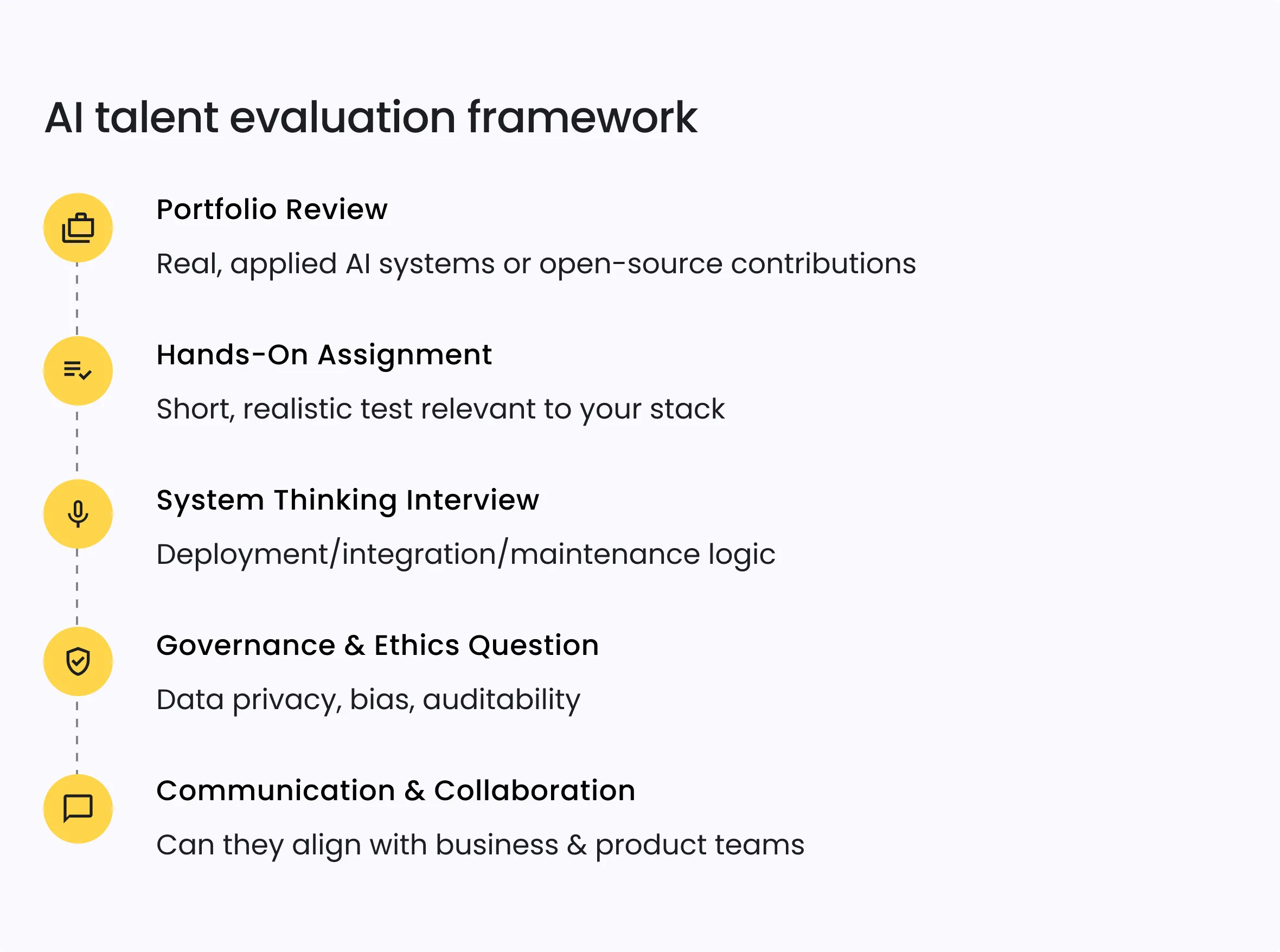
Governance, IP & security: Non-negotiables
AI hiring isn’t only about capability – it’s about accountability. You can hire the smartest engineers in the world, but if no one defines who owns the model, the data, or the risks, every success becomes a liability waiting to surface.
The good news: governance doesn’t need to slow delivery. It just needs to start early, before contracts are signed and code is committed.
Why governance belongs in the hiring conversation
Most teams still treat governance as a final checklist before launch.
The ones succeeding in 2025 are baking it into the job descriptions.
Ask yourself during hiring:
- Who in your team understands data privacy (PII, HIPAA, FERPA, GDPR)?
- Who signs off on fine-tuning data and model reuse?
- Who monitors model drift and fairness metrics?
If the answer is “we’ll figure that out later,” that’s your biggest risk.
Governance in contracts and scopes
Your hiring or partnership agreement should make these elements explicit:
- Data ownership. Who controls the original datasets and the trained weights?
- Model transparency. What gets logged, documented, and versioned.
- Audit rights. How willyou verify that outputs meet quality and compliance standards?
- Bias and fairness testing. Defined deliverables, not optional extras.
- Security and access. Who manages API keys, tokens, and environments?
- Exit plan. Continuity if a vendor leaves or a model needs replacement.
Having these clauses doesn’t slow you down — it prevents six-month rebuilds when regulations catch up.
Governance as a skill, not a department
The fastest-moving organizations treat governance like DevOps: embedded, not siloed. Engineers are trained to log responsibly. Product managers include bias metrics in success definitions. Legal and data teams collaborate on retention policies instead of issuing memos after the fact.
This approach builds trust with leadership, auditors, and, most importantly, your audience.
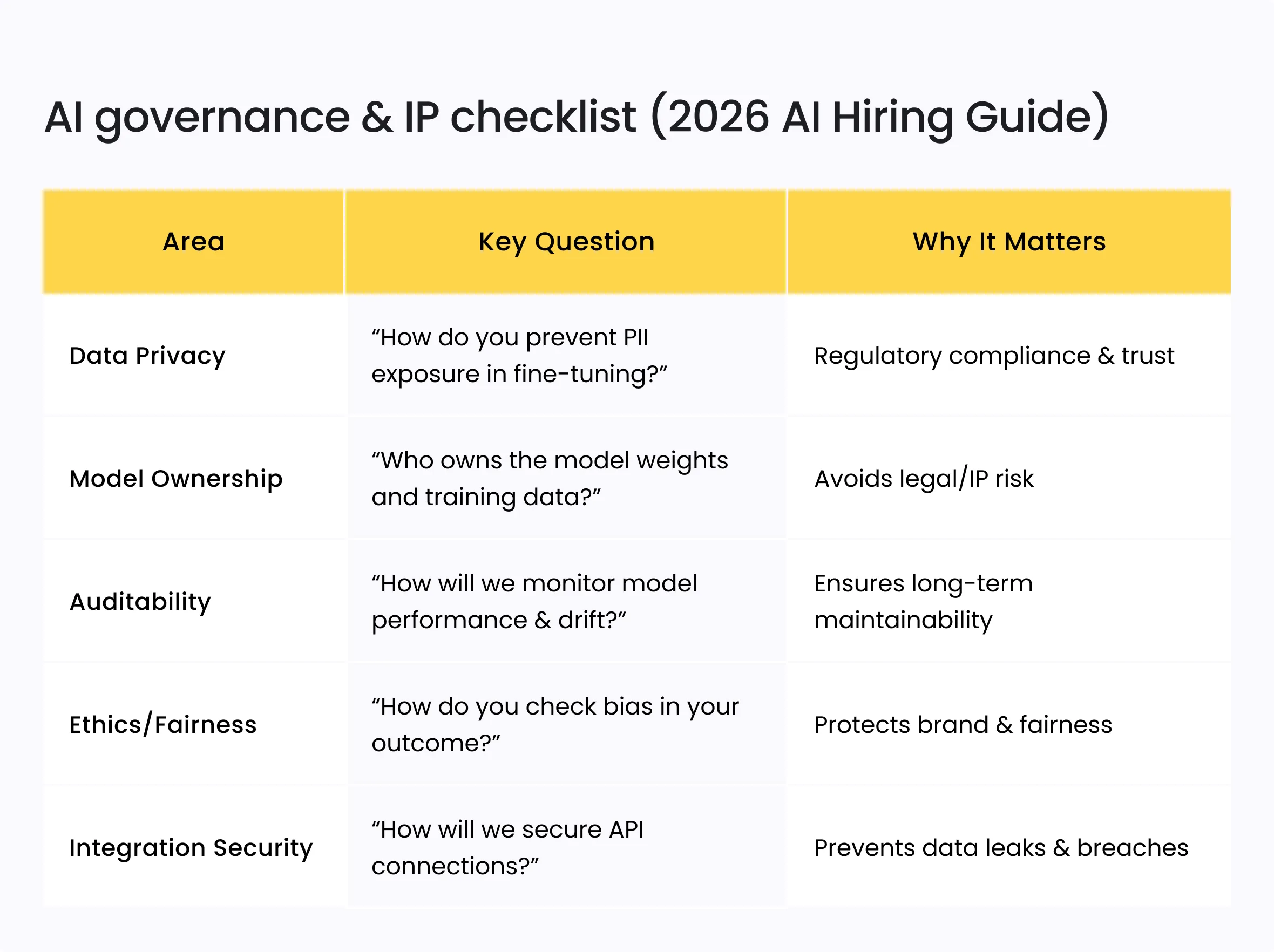
Make, buy, or hybrid: The decision matrix
Once you know the roles and guardrails, the next decision is ownership. Do you build your AI capability in-house, buy it from a partner, or combine both? The answer depends less on budget and more on your organization’s maturity, urgency, and integration depth.
The three strategies that define 2026
1. Make (In-House Build)
Build and retain full control of your AI stack – from data pipelines to deployment.
- When it works: you already have a strong engineering culture and long-term funding.
- Advantages: full ownership, deep integration, direct oversight of compliance.
- Risks: slow start, higher salaries, steep learning curve.
- Real example: a tech-savvy university developing an in-house recommendation engine for student content.
2. Buy (External Delivery)
Leverage a specialized vendor or platform to deliver a defined AI component.
- When it works: your need is narrow and time-sensitive. E.g., a chatbot, analytics pipeline, or pilot project.
- Advantages: speed to value, predictable costs, minimal internal overhead.
- Risks: limited customization, vendor lock-in, and less knowledge transfer.
- Real example: a nonprofit deploying an AI support bot through a pre-built platform instead of hiring internally.
3. Hybrid (Co-Build Model)
Blend internal leadership with an external expert team. Your people own the strategy and outcomes; your partner accelerates delivery and ensures governance.
- When it works: you need speed and sustainability, especially in regulated sectors.
- Advantages: balance of control, compliance, and capability building; faster integration into legacy systems.
- Risks: requires strong documentation, consistent communication, and a clear exit plan.
- Real example: a healthcare organization integrating AI into its CMS and CRM with Five Jars as a technical and governance partner.

Your AI-hiring quick roadmap
Hiring AI talent isn’t a one-time event, it’s a design process. If you’ve read this far, you already know the pattern: start with outcomes, build the right mix of people and partners, and make governance the default, not an afterthought.
Here’s the short version to keep on your desk.

Wrapping up
At Five Jars, we’ve learned that building AI capability isn’t about hiring faster; it’s about hiring smarter and structuring collaboration that lasts.
Whether we’re integrating AI into a CMS, designing data pipelines for personalization, or embedding governance into day-to-day delivery, the goal is always the same: turn complex technology into sustainable value.
If you’re defining your next AI initiative and want it to move from concept to production without friction, let’s talk about how the right mix of people, process, and partnership can get you there.
